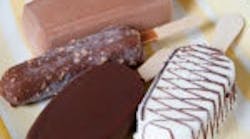Most consumers recognize fiber is beneficial and protective of digestive health, that it could aid weight loss and lower cholesterol and provide other benefits. So much so that today, six in 10 people express a desire to get more fiber into their diets.
But expressing a desire and making the dietary change are two different things. According to the USDA's Dietary Guidelines for Americans 2010, 14g of dietary fiber per 1,000 calories is considered adequate intake. That's about 25g per day for women and 38g per day for men.
Fiber has a dual purpose in processed foods. In addition to the health benefits, it increases moisture retention and adds texture, pliability, elasticity and heat stability, especially in non-bakery products such as meat analogs. The past few years have witnessed the development of whole new tool kits of isolated dietary fibers designed to re-create the foods Americans reach for.
But fiber now is associated more with health benefits than its mechanical properties. "Fiber for digestive and heart health plus prebiotic and probiotic abilities have experienced a sharp rise in awareness," says Deb Schulz, product manager for the Oliggo-Fiber brand of inulin from Cargill Inc. (www.cargill.com), Minneapolis. "We offer a number of fibers to food manufacturers so that no matter the application, we likely have a solution."
The fiber ingredients hitting the market are derived from a variety of natural sources and make stealth-like appearances in modern foods. They're barely, if at all, recognizable by consumers, and actually improve flavor, texture and the stability of the final product. Fiber gets to be emblazoned on labels, but in the foods is nearly undetectable.
The most impressive advance is that changing fiber content for the better now hardly affects taste, texture or other parameters that traditionally influence consumer acceptance. Take inulin for example. This polysaccharide found naturally in chicory, artichokes and other root vegetables has a slightly sweet taste and a wealth of health advantages.
The specific health benefits of inulin include prebiotic benefits and weight management, as well as enhancement of calcium absorption in adolescents and post-menopausal women.
Cargill recently developed prototypes that include its Oliggo-Fiber in food items that traditionally haven't been considered good sources of fiber. Examples include: creamy soups, ice cream bars and gummy candies.
"Inulin is a great fiber ingredient solution for food manufacturers because it can be used in practically any food product application, delivering prebiotic fiber benefits, soluble fiber benefits and functional benefits," adds Schulz. "It can be used as a fat or sugar replacer as well. With such versatility, processors are able to reach all types of consumers."
Cargill also has seen success in the past few years with its Barliv brand of soluble fiber derived from whole grain barley. It's been shown to lower cholesterol in a manner similar to oat fiber. More recently, the company released Grainwise, made from the nutrient-rich coating of the wheat grain called the alurone. Grainwise is 45 percent dietary fiber, and contains vitamins, minerals and antioxidants, bringing many of the nutritional benefits of whole grains into processed foods as a component of white whole wheat flour.
White whole wheat flour has had high appeal for consumers who typically avoid whole grains. This is because its organoleptic qualities make products that are nearly indistinguishable from traditional formulations. MaizeWise, too, is an insoluble fiber from corn that has minimal impact on flavor, texture, color and processing.
Another successful soluble fiber ingredient from corn is Promitor from Decatur, Ill.-based Tate & Lyle Americas (www.tateandlyle.com). Promitor claims a 70 percent minimum dry dietary fiber content, without impacting taste.
New for the Promitor line is a formulation with higher fiber and less sugar, suitable for no-sugar-added applications. It "easily integrates into existing formulations without changing taste or texture [and is] well tolerated," the company says. Water-soluble, the ingredient comes in both liquid and powdered form and is both process- and acid-stable, opening it to multiple food applications.
Creating a desirable product that is higher in fiber requires more than simply adding fiber into the system. You want to use the products that will do this while also helping to stabilize or add other desired properties to the end product In this manner, it's possible to take the new ingredients and new technologies and make them work on multiple levels to create products that put desirability foremost but do so with the allure of healthfullness consumers now associate with fiber.


